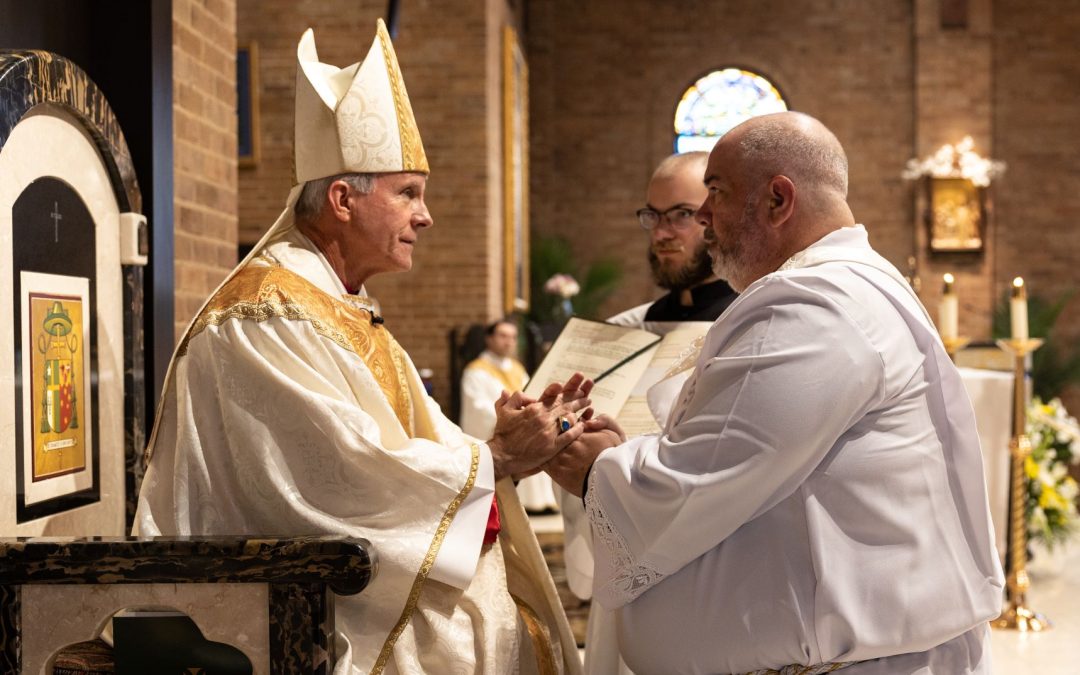Authors Note: The content of this article contains details that may be difficult for some to read (such as violence) and is intended for mature readers.
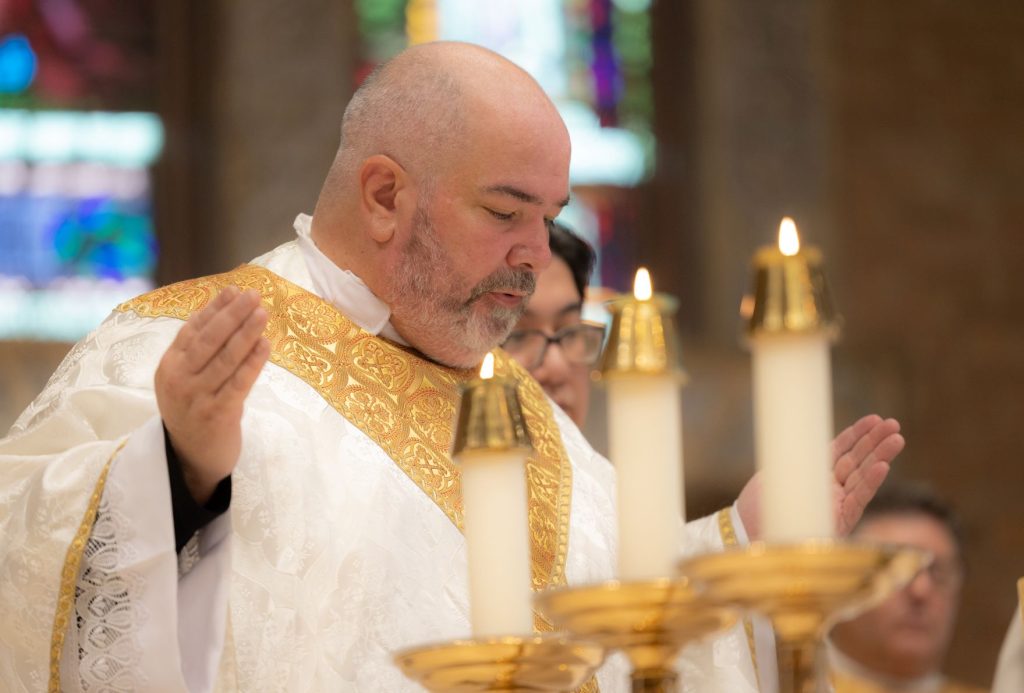
Ordained on Saturday, May 29th, Fr. David Bailey is the Parochial Vicar of St. Mary Magdalene Church in Flint, Texas. Before he began his assignment this summer, he visited several Native American reservations. This is the story about how he first came to know them, what he learned, and how his priesthood has added a special element to that relationship.
“I celebrated my first Mass on May 30th at the Cathedral of the Immaculate Conception at Tyler, Texas,” Fr. David began. “My second Sunday Mass was at Cante Wakan Church, which translates to Sacred Heart, on Pine Ridge Indian Reservation in South Dakota. It’s home to the descendants of Crazy Horse, Red Cloud, and Black Elk (who has a cause for canonization under the name of Nicholas Black Elk). This visit would complete the full circle that is his journey with Natives.
Recalling how it all began, Fr. Dave accredits it to his desire to serve. He joined the United States Navy during Desert Storm in 1991. As the term of enlistment reached an end, he remembers standing in attention, contemplating his life and what he was doing with his time. He knew God called him to deeper service. Although he wasn’t sure what that entailed, he knew it would have something to do with Natives. As his future seminary motto would say, Deus Providebit. God will provide.
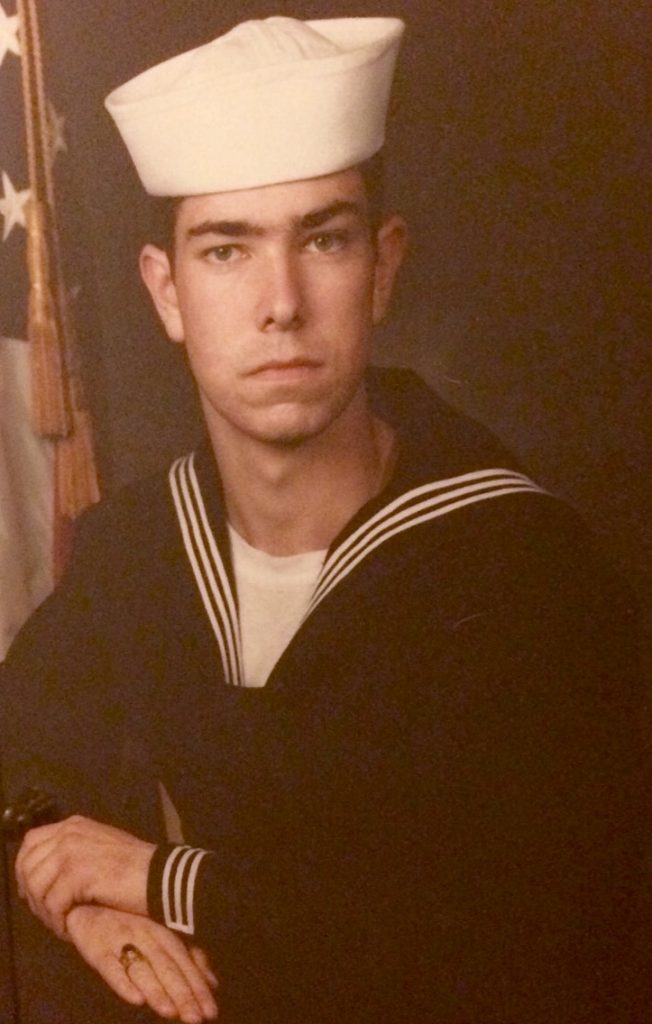
“From a very early age, I was interested not only in their culture or history, but also had a powerful sense of the social justice issues that continue today,” he said. “Lo and behold, just a few months before discharge, I met a Native woman. She invited me to a get-together of a bunch of military service Natives, as there were two Navy bases, an Army base, and a Marine Corps base close by.”
He made connections, and the next thing he knew, he was couch surfing on reservations all across the country.
“When I left the Navy and went back to college, I was dividing my time between studying Sociology and Native American Studies in Oklahoma and going to reservations,” Fr. David said. “I started raising awareness on certain issues and fundraising for some of the under-funded schools on certain reservations.”
He intended to work full time as a social worker for Native communities until, progressively, his call to service led him to the priesthood.
“It was a progression of deeper levels of service – from the Navy to Natives, to work in Ireland, to finally this point where God called me to give everything. Initially, I did not know how that immediately crossed over to my work with Natives. I began to think that my time with Natives was a chapter that was ending. For several years I labored under that idea until my third year in the seminary, where I began feeling very strongly to once again go back to Native communities and reestablish friendships and connections.”
“In the seminary, I realized that whatever my priesthood is going to look like in my obligation to the people of God in the Diocese of Tyler, Natives are going to have to be an element of it,” Fr. Dave said.
With the support of Bishop Joseph Strickland, Fr. Bailey can continue advocating and ministering to Native peoples. He is a member of the Tekakwitha Conference, representing Natives who are Catholic in the United States. He is also a member of the Native American Advisory Board to a subcommittee of the United States Conference of Catholic Bishops. He is currently writing a book about what Catholics should know about Natives.
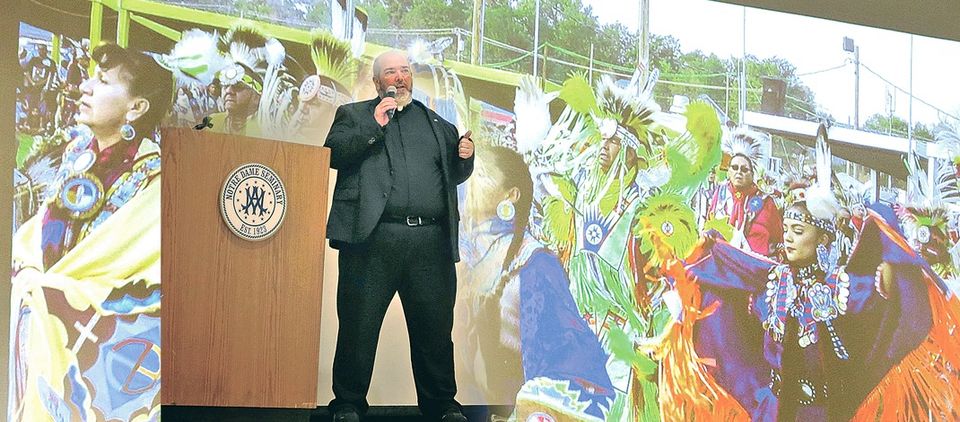
“Part of our ministry as Christians is to see the Imago Dei, or the image and likeness of God, and the dignity that everyone is entitled to by virtue of that,” Fr. Dave said.
He has come to know Natives on a more intimate level over the years. He experienced tight-knit communities, danced at pow-wows, and prayed at holy sites. On one of his visits, he and three of his Native friends drove all night to get to the Pine Ridge reservation in South Dakota. They didn’t want to get there too early and wake their hosts, so they decided to visit a sacred mountain.
“It was my turn to drive. I asked the guy who was navigating, ‘What do I do next?’ and he said, ‘You’ll know it when you see it.’ We’re driving along. I look to the left out over the distant horizon, and as the first rays of the sun begin to color the sky, I see the sacred mountain. I have never felt something more instantly captivating and strangely familiar, and just powerful, ever!”
“We went up, and there were all these items people left up there that are instruments of prayer to the same monotheistic Creator God as us. In their language, the word for God translates to Grandfather. It’s familial, paternal. I don’t currently know of any natives in the United States or Canada that are historically polytheistic. The traditions, spirituality, culture, customs, for most Natives, are very much holy. I believe we are talking to the same God. The only missing piece of the equation was they didn’t know that Grandfather, Creator, God has a Son. Unfortunately for them, their introduction to that knowledge came about from people who did not preach Christ in a Christlike manner. We failed in that regard. The only thing we can do now is care.”
Father began experiencing their spirituality through their eyes, and it was a captivating thing which changed him.
“To this day, anytime I’m in that area, I go to that sacred mountain. When I went up there (South Dakota) in June, I went up there (the mountain) for three hours between the first and second reservations I visited. But now I was there as a priest praying the Liturgy of the Hours. It’s still captivating,” he said.
However, he also became painfully aware of their plight and social justice issues: from witnessing racism with his friends, to teenage suicides, generational trauma resulting from boarding school issues, and the current Missing and Murdered Indigenous Women (MMIW) epidemic.
MMIW
“Since 2016, more than 5,700 Native women (sometimes even men and boys) in Native U.S. and Canadian communities have been reported as abducted and either never found, or found dead. In June, I was at two reservations where five MMIWs were found dead, the youngest of which had been eight years old. The wider world needs to be aware of the reality of MMIWs. Why this happens is a mystery,” Fr. Dave said.
In May 2016, Father continued, one year before the disappearance of Ashley Heavyrunner (a member of the Blackfeet nation in Montana), the U.S. Department of Justice released the document, Violence Against American Indian and Alaskan Native Women and Men. The report revealed that 84% of Native women in the United States will be physically abused in their lifetime. In 70% of these cases, their abusers are non-Natives. Almost half of the Native women will be stalked. 1 in 3 Native American women will be sexually assaulted in their lifetime. 45%, roughly, of Native American women, will be stalked, and 90% of the time, the perpetrators are non-Natives from outside their communities.
“On a Friday afternoon, I sat in a chapel heavy with emotion over thoughts of Helen Betty Osborne (a Cree Indian from Canada killed in 1970). I could not escape the horrendous details of her murder. She and so many others are constantly perched in the forefront of my mind. It’s impossible to grasp the grief of their families and communities fully. I often became overwhelmed as I delved deeper into the staggering statistics and brutal truth of so many Native deaths. In the chapel that day, I spent more than an hour wondering who I could go to about something so dark, so tragic,” he said.
“Later that afternoon, I sat beside the altar during Mass. From my vantage point, I could see the 14th station of the Stations of the Cross, where Jesus is laid into the tomb. In the image which depicts this event, his grieving mother stood over her deceased son, looking deep into his lifeless eyes. Who can imagine such grief? It was then when I realized the answer to my question from earlier. Who can you go to with the grief of murdered women and children? The Virgin Mary is the perfect intercessor for this occasion. After all, her son was not only murdered, but she watched it happen. His death, slow and brutal, unfolded right before her eyes. If anyone can understand the tragedy befalling so many Native communities throughout North America, it’s Mary. As this recognition dawned on me, I silently prayed for the intercession of the Blessed Mother for the families and communities of Missing and Murdered Indigenous Women,” Fr. Dave said.
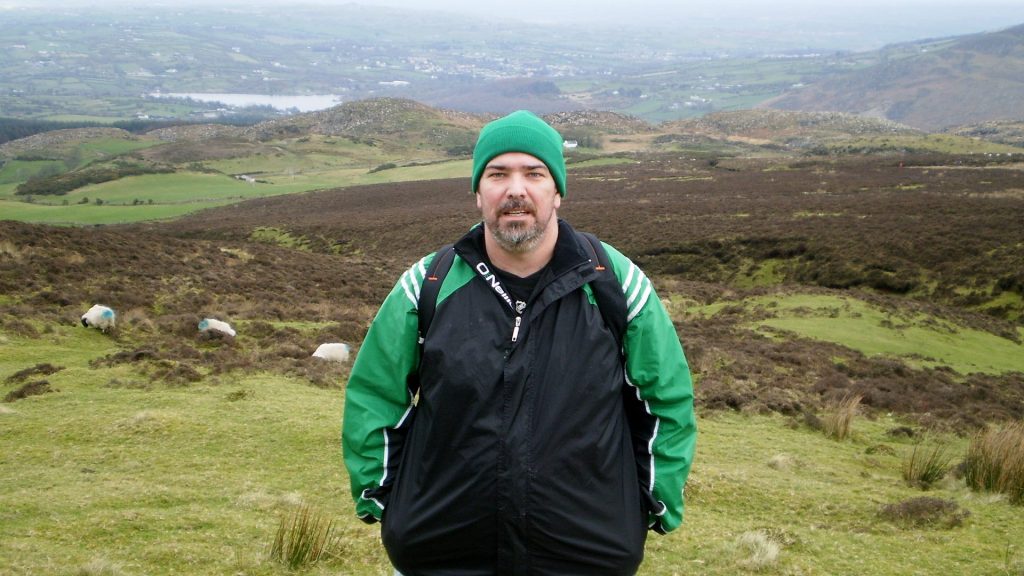
BOARDING SCHOOL ABUSES
“The big thing in the news right now was the discovery of a mass grave of 215 children at what was a boarding school in Kamloops, in Canada in Blackfeet, a confederacy of four tribes in Alberta. At that time in Canada, 2,800 children died while at boarding schools. This most recent discovery adds 215 more. From a period going back to the turn of the century, both the U.S. and Canadian governments implemented this policy that amounted to nothing short of cultural genocide. Their idea was to ‘kill the Indian to save the man.’ That was the stated intent of General Pratt, who established Carlisle Indian School in Pennsylvania, which was a military-style school. Still, children were being put through it, taken from their tribes, and brought to these industrialized schools,” Fr. David said.
These numbers do not include the United States boarding schools or unfound graves. Though federally funded, the Catholic Church ran many of the schools, and the abuses are horrendous, Fr. David shared.
“Back in October, I sat with an elderly Native woman from the Cheyanne reservation who was sent to boarding school as a girl, and so was her future husband. Her husband’s school was run by the Church, which did not allow the children to speak their languages. They were very abusive about making them learn English. It was a miserable experience for them both,” Fr. Dave began.
He was visiting on the occasion of the husband’s funeral. Her relationship with the Church was unfortunate, and she said the last time she went to a Catholic Church was in 1965 for her wedding.
“She said to me, ‘When you’re ordained, and you come back to visit, I’ll go to Mass with you.’” Fr. Dave said. “And when I did go back to visit (in June) after I was ordained, one of the first things she said to me was, ‘What time is Mass on Sunday?’”
After visiting more friends in Montana and Wyoming, Fr. Dave returned to the Diocese of Tyler for about four days before he got a call from some friends in Montana that a 33-year-old he had just seen was found dead in his sleep. He had an eight-month-old baby. They asked Fr. Bailey to come back and preside over the final commendation of the burial.
“It was only two weeks prior that I had been visiting with the elderly woman,” He remembered. “Now I was there again to bury her grandson. I sat with her at her family home with my arm around her as she was sobbing. As I left, I got a message from one of her sons, whom I’m also very close to, and he said, ‘Thank you so much for coming back and for all you do for the family and my mother. You restored her faith in God.’ It’s not to say she didn’t already have faith because traditionally, Natives are very holy people.”
“All I was trying to do was be a good friend to people that I cared about and known for almost thirty years. They are as much a part of me as anything else. But now I’m a Catholic priest visiting in their time of need as we’re burying a brother, nephew, son, grandson, and cousin. In all the grief they were going through, it was undeniable that the element of my priesthood made things different in a good way,” Fr. Dave expressed. It was like his spiritual director had said years prior when he was a seminarian.
His spiritual director told him, “God knew from the time you were born and before what his plan for your life was. He always intended for you to be a priest. You just didn’t know that until fairly recently. Twenty-some-odd years ago, when you were forming these relationships, God had every intention of using you in that way all along so that you could come back as a priest where you could do far more for them with the sacraments than you ever could have done on your own.”
Fr. Dave added. “In less than a month of becoming a priest, I saw all these things demonstrated. God puts little things in our hearts to get us from one step onto the next until finally, it all makes sense. I went through all these things because, eventually, I was meant to do this other thing. In the overarching scheme of his plan, God knows how the finished puzzle is supposed to look. All I’m doing is looking for puzzle pieces. Eventually, I found a couple, and suddenly, I could see the picture clearly and say, Oh! It’s going to look like this. Far more amazing than I could ever have imagined.”

